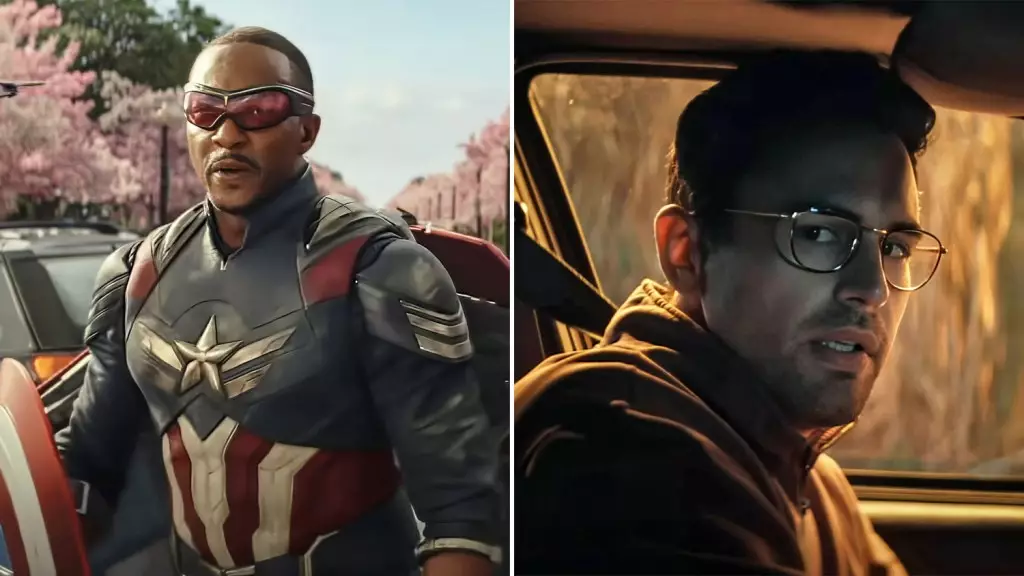In its second weekend, Marvel Studios’ “Captain America: Brave New World” is expected to maintain its box office lead, projected to earn over $30 million. The film’s impressive performance can be attributed to its continued presence in IMAX and premium screens, capitalizing on the built-in audience of the Marvel Cinematic Universe (MCU). With a four-day opening gross of $100 million, the film initially sparkled bright, although it has also generated mixed reactions from audiences, evidenced by its B- Cinemascore rating. This cinematic chapter in the Captain America saga is now setting its sights on achieving a more favorable weekend hold than other recent MCU films, such as “Ant-Man and the Wasp: Quantumania,” which saw a significant decline of 70% after its opening.
Despite the MCU’s recent struggles, “Brave New World” has a solid standing in the market. After grossing approximately $6.3 million on Tuesday, the film’s cumulative total stands at $106.3 million, only trailing “Ant-Man” by a slight margin. The film’s ability to attract diverse audiences could help it sustain its box office momentum, despite the challenges that lie ahead.
On the other hand, the indie horror film “The Monkey,” produced by Neon and directed by Oz Perkins, is drawing significant attention, projected to earn around $17 million in its opening weekend across 3,200 theaters. This film, rooted in Stephen King’s work, employs an innovative marketing strategy that has proven effective. With a trailer garnering 109 million views, “The Monkey” has emerged as a dark horse in the box office race, competing against established franchises. This film’s unique approach includes themed premiere events and eye-catching promotional displays, such as 8-foot tall monkey statues in theaters, amplifying the online buzz.
The story, which revolves around twin brothers Bill and Hal discovering a sinister toy from their childhood that leads to gruesome consequences, taps into a deeply unsettling realm that many horror fans crave. Garnering strong reviews with an 84% approval rating, “The Monkey” stands shoulder to shoulder with other successful titles like “Companion” and “Heart Eyes,” proving there’s a healthy appetite for quality horror films in today’s box office landscape.
Neon’s Strategic Vision and Impact
Neon’s acquisition of “The Monkey” for high single-digit millions at Cannes demonstrates a clear strategy to harness the escalating popularity of horror films. The company has effectively tapped into the niche of horror enthusiasts, particularly targeting younger audiences aged 17 to 34, as well as diverse demographic segments, including Latino and Black moviegoers. As audiences increasingly seek diverse stories, this approach not only enhances the film’s commercial viability but also reflects a broader trend in the industry towards inclusivity.
With the looming release of another Perkins-helmed horror film, “Keeper,” slated for October 3, Neon’s commitment to horror storytelling indicates a calculated risk with potential for substantial reward. James Wan’s involvement in producing “The Monkey” adds an extra layer of anticipation; his established reputation as a creator of iconic horror figures only bolsters audience expectations.
Beyond the titans of Marvel and the indie horror scene, the entire domestic box office is currently experiencing a resurgence, reporting $895.8 million year-to-date; that figure is notably 20% above last year’s performances. However, these numbers mask underlying challenges that smaller films face against the heavyweight blockbusters. While “Brave New World” vies for supremacy, independent films such as “The Unbreakable Boy”—a new release by Lionsgate—are anticipated to perform in the single digits, indicating the challenges indie films still encounter in a market often dominated by larger studios.
Ultimately, the contrasting trajectories of “Captain America: Brave New World” and “The Monkey” highlight the evolving dynamics of the box office today. As franchise films and indie projects vie for audience attention, the industry continues to adapt, revealing a landscape that can be both vibrant and unpredictable. Only time will tell how long each film can sustain momentum in this competitive environment and what this means for the future of film as an art form and business.

